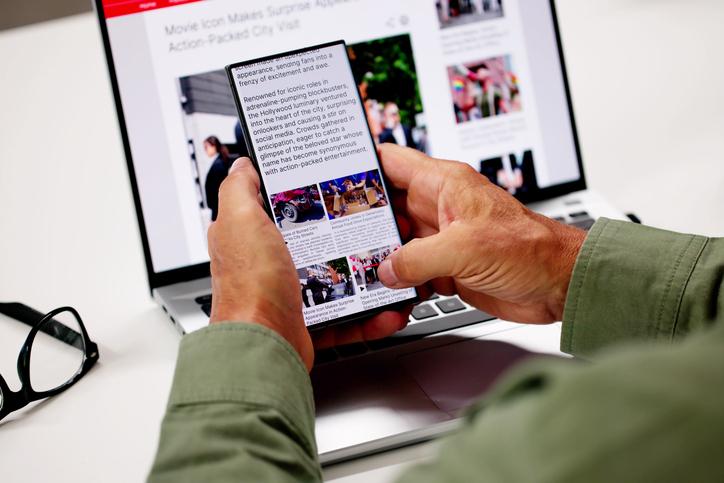Disinformation is a pervasive global challenge, evolving in scope, sophistication and the scale of its impact in just the past few years. There is extensive research exploring why critical thinking is key in tackling fake news and its importance as a foundational skill, which higher education can embed in students and the wider community. Here, I’ll explore why critical thinking is crucial in the fight against fake news and outline successful approaches to upskilling members of the public, based on a community engagement case study.
Why critical thinking to combat misinformation?
Critical thinking is the capacity to analyse information and effectively form a judgement. When thinking critically, someone checks for fact versus opinion; draws conclusions based on evidence; accounts for different points of view and detects bias, contextualises within the wider picture and recognises the difference between description, analysis and evaluation.
- Four ways to help students develop critical thinking skills
- Is critical thinking the answer to generative AI?
- How to teach critical thinking to beginners
The negative political and social impacts of misinformation have accelerated owing to technological shifts, psychological dimensions and emerging issues around artificial intelligence and information fatigue. Critical thinking builds resilience in an age where it is unrealistic to reactively fact-check. To counter fake news, students and the wider community must be equipped with the below skills:
- Healthy scepticism: pauses to question sensational or emotional claims before reacting or sharing – important for sources that stoke strong emotional and kneejerk reactions.
- Source evaluation: assesses an author’s credibility, motives and biases, helping to determine reliability, which is crucial for unverified social media content.
- Identifies biases and propaganda: increases awareness of confirmation bias and exposes tactics like loaded language and emotional appeals that distort judgement.
- Fact-checking and cross-verification: verifies claims by consulting multiple reliable sources rather than relying on one or passively consuming information.
- Contextualisation: considers the full picture, reflects on context behind a piece of information, including the timing and potential agenda behind its creation.
- Reasoned decisions: filters misinformation to form informed, fact-based opinions.
- Nuance: encourages grappling with the messy, “grey” areas of life, countering the push towards black-and-white thinking driving polarisation.
‘Fake or real news?’ workshops
I developed “Fake or real news?” workshops as part of a community engagement programme, aimed at increasing critical thinking skills for adult learners in community settings. Attendees share their own anecdotal experiences and examples of scams and fake news. Our facilitators can then demonstrate to participants that they are already critical thinkers in practice, bolstering confidence in their skills and their ability to converse and debate.
Participants have often entered the workshops cautious of their abilities, but left with a shift in mindset and confidence to leverage their skillsets beyond the context of the session, perhaps through job interviews or further education. Longitudinal surveying shows excellent results one to two years later, with 89 per cent citing a sustained increase in confidence in their critical thinking and 72 per cent putting the workshop’s teaching into practice in their everyday lives.
What approaches make this workshop successful?
The success of the workshop is achieved by the underpinning design and facilitation principles embedded throughout.
First, the audiences are considered with a strengths-based approach, focusing on their existing knowledge and ideas, rather than positioning them through deficits. In the workshop, this means starting where the audience are, eliciting their experiences around fake news and building from there. The techniques and tools shared in the workshop trust that the audience has that capacity. They’re best placed to challenge and influence others already, and just need practice and clarification.
Facilitators should encourage discussion, challenging assumptions and providing space for disagreement. Do this by balancing pre-agreed classroom rules with more light-hearted, fun and interactive activities.
An additional detail, which can easily bolster this approach, is presenting participants with a certificate to reflect their effort and success. This seemingly small detail is really popular with most participants. The facilitator should also use reasoning and enquiry questions when challenging ideas, and model nuance and the acceptance of fallibility. Ultimately, the individual will make up their own mind.
Differentiate between misinformation (unintentional) versus disinformation (intentional). When explaining these differences, use different perspectives and motivations, to humanise those who disagree. Share scripts and tips for conversations. Participants can have more productive conversations when interrogating intention – particularly important when dealing with friends or family. Universities are part of this wider community, and using research to increase trust and relatability to research and experts is paramount.
Disinformation is a huge challenge, but it is not insurmountable. By nurturing critical thinking, universities can equip students and communities alike with the tools to question and discern. The case study shows that when critical thinking is fostered through meaningful engagement, participants are empowered not just to resist fake news, but to become active contributors to a more informed and resilient society. Investing in these skills is more than an academic exercise – it is a collective step toward safeguarding the integrity of knowledge, and strengthening our communities.
Laura Bradnam is community engagement manager at Birkbeck, University of London.
If you would like advice and insight from academics and university staff delivered direct to your inbox each week, sign up for the Campus newsletter.




comment